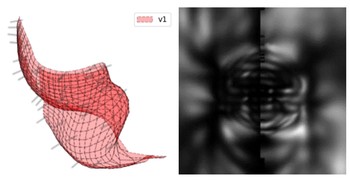What do visual prosthesis users see, and why? Clinical studies have shown that the vision provided by current devices differs substantially from normal sight.
Emily M. Joyce
(she/her)
PhD Student
University of California, Santa Barbara
Emily is a PhD student in the Dynamical Neuroscience (DYNS) program at UC Santa Barbara. She previously worked with EM connectomics datasets at Janelia and at the Allen Institute, where she conducted research in cell typing and neural circuitry in sensory areas. During this time, she also developed open-source tools to analyze neuronal morphology and connectivity.
Emily’s research is focused on understanding information processing in the bipolar cells of the retina for the purpose of improving prosthetics that stimulate these cells directly. To address this question, she is working on cell and circuit-level modeling of human retinal bipolar cells.
In her free time, she enjoys gardening, training her dogs and learning how to surf.
- 3205 BioEngineering
Honors & Awards
- Traveling Undergraduate Research Fellowship, College of Creative Studies, UCSB (2025)
Education
-
PhD in Dynamical Neuroscience, 2029 (expected)
University of California, Santa Barbara
-
BA in Neuroscience, 2018
Scripps College
Project Lead
Project Affiliate
Towards a Smart Bionic Eye
Rather than aiming to one day restore natural vision, we might be better off thinking about how to create practical and useful artificial vision now.

